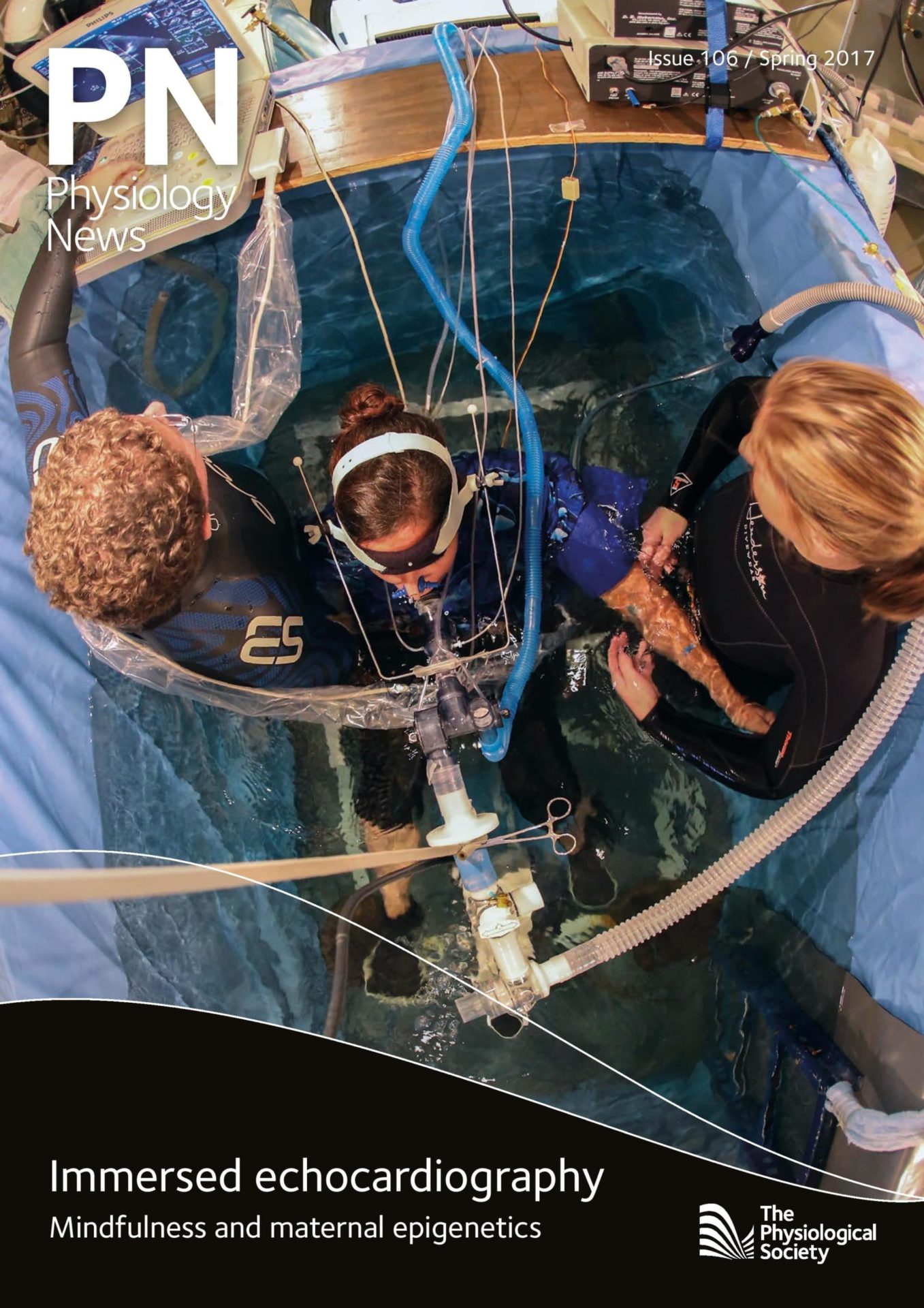
Physiology News Magazine
Triathlon danger: causes and risks of Immersion Pulmonary Oedema
Membership
Triathlon danger: causes and risks of Immersion Pulmonary Oedema
Membership
Richard Moon
Duke University, Durham, NC, USA
Taking inspiration from our archived images, the 2016 ‘Physiology in our time’ photography competition sought to record present day physiologists in their working environment. Richard Moon, first prize winner, tells us about the research captured in his photo.

A physically fit woman in her 30’s was training for a triathlon. After several minutes she was short of breath, began coughing up blood, and had to stop swimming. She was rescued and taken to hospital, where she was admitted to the intensive care unit with a diagnosis of pulmonary oedema. After she recovered, investigation of her heart and lungs revealed no abnormalities.
This scenario has been experienced by numerous healthy individuals, most notably naval combat swimmer trainees. The condition has been named immersion pulmonary oedema (‘IPO’, also called swimming-induced pulmonary oedema, ‘SIPO’). SIPO was first reported in the 1980’s by Dr Peter Wilmshurst, who described it in 11 swimmers and scuba divers (https://www.ncbi.nlm.nih.gov/pubmed/2562880). SIPO usually resolves spontaneously but it may require oxygen therapy and hospitalisation, and can even be fatal.
Pulmonary oedema is most commonly seen in patients with heart disease or who are otherwise critically ill. What could be the cause of pulmonary oedema in such physically fit individuals? Peter Wilmshurst had observed that susceptible individuals had an exaggerated vasoconstrictive response to cold, perhaps triggering heart failure due to excessive cardiac afterload when immersed in cold water. Whether this was the explanation for all SIPO-susceptible individuals was unknown.
We initially studied the cardiopulmonary response to cold by submersing volunteers in 20°C water and using radial and pulmonary artery catheters to study them during exercise. We then studied 10 SIPO-susceptible volunteers in the same way. During submersed exercise, susceptible individuals had higher pressures in their pulmonary arteries than those who had not experienced SIPO. The combination of exercise and water submersion, which causes redistribution of blood from the periphery to the thorax, precipitated high pulmonary vascular pressures that were sufficiently high to induce haemodynamic pulmonary oedema. Pulmonary vascular pressures decreased after administration of Sildenafil, suggesting that this drug might prevent SIPO (https://www.ncbi.nlm.nih.gov/pubmed/26882910).
High pulmonary capillary pressure provided an explanation for pulmonary oedema. However, systemic arterial pressures were similar in both groups. We still did not know why these pressures were higher than normal. In order to investigate further, we performed 2-D echocardiography during head-out immersed exercise in cold water in both SIPO-susceptible and control groups. We are currently analysing our data analysis, but preliminary results suggest that the left ventricle of SIPO-susceptible individuals is stiffer than in non-susceptibles, thus requiring higher pressure to fill the heart, which in turn exerts a back pressure on the pulmonary blood vessels.
Although all of the volunteers in our study had normal hearts, some SIPO victims do have obvious predisposing factors such as hypertension, left ventricular hypertrophy or cardiomyopathy. These conditions can cause high pulmonary vascular pressure due to abnormal systolic or diastolic left ventricular function. Indeed, we have proposed that SIPO could be a cause of otherwise unexplained death during triathlons, particularly in individuals with such conditions (https://www.ncbi.nlm.nih.gov/pubmed/27900191).
We hope that our work will make people more aware of immersion pulmonary oedema, its predisposing factors and the risks that it poses.
